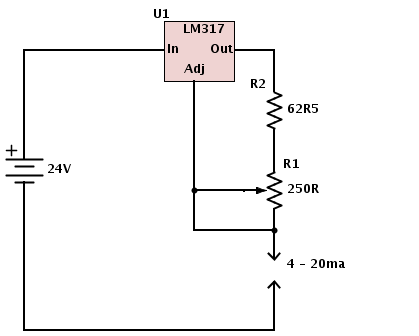
Bryll
MrPLC Member-
Content count
349 -
Joined
-
Last visited
Posts posted by Bryll
-
-
You don't have any label for the double words, hence the warning.
-
Write "H1C97" instead of "H1097" to D8400
-
Set the value "15" in parameter 14.01 and the inverter will activate relay 1 when reversing.
Parameter 14.02 will do it for relay 2, and 14.03 relay 3.
-
-
If you are using Step 7 Classic, locate the tag and select it, then press "ctrl"+"alt"+"Q".
Then you can see where in the program the tag is used for reading and/or writing.
In TIA Portal, locate and select the tag, press "shift"+"F11".
The cross-ref. for the tag will pop up and show you where the tag is used for read and/or write access.
-
I'm more a GX IEC Developer guy that recently started working with GX Works 3, so I more or less jumped over GX Works 2.
Pretty sure there are some guys at the forum with good knowledge about GX Works 2.
-
-
Yes there is, what software do you use ?
-
Not sure I understand your question, but you can program the Siemens CPU in STL, Ladder, FB programming and also build FB and FC in structured text.
You can also program in SFC (Flowchart), but let's skip that one at the moment.
Closest to the compiled "machine code" that you load into the CPU is STL (statement list).
Next level is Ladder.
Above ladder is function block programming.
And above that is SCL (structured text).
The size of the compiled machine code might (will probably) differ between four programs written in these four programming languages.
You can switch programming language in Step 7 and TIA portal to see the difference between STL, Ladder and FB programming.
-
You will find most of the information you might need just by pressing "F1" in Step 7 or the TIA Portal.
You might want to search through Siemens web site for some "Get started" documents too.
Start with your local Siemens web site before you look at the international.
-
It all depends on what you have (hardware) and what you plan to do (software) with it.
Siemens manuals contains a lot of information, actually to much to easily find the specific information you are looking for.
-
Have you downloaded the latest version of DOP soft ?
I'm running version 2.00.05 on Windows 7 without any problems.
Check that the DOP soft version you have is able to run on your operating system, should be stated on the Delta website.
-
What's the part no. of your CPU and ET200 ?
You might have to write to "PI600.1" instead of "I600.1"
-
There is no need for DP-SEND or DP-RECV if you set up your hardware configuration to use the ET200 as a profibus node.
Your ET200 I/O is then configured with normal I/O addresses like Ix.x, Qx.x, IWxxx and QWxxx.
You read and write the addresses like you do with the ones connected to your 300 CPU.
Edit:
What software are you using ?
Step7 classic or the TIA Portal ?
-
-
The 1200 family is the small and to be a Siemens CPU quite affordable.
You can select a suitable CPU from the 1211 up to the failsafe 1215F CPU.
-
You could try Siemens homepage, there you can download V13 and use the trial license.
I guess you tried to install V10, that version will only give you problem.
V11 was also a disaster, but still better than V10.
V12 was much better, but still very unstable.
V13 is much better, it actually works quite good.
-
You want someone to develop a complete PLC and HMI program for you if I understand your first post correctly.
The best thing is to try yourself and ask for help when you are stuck.
I'm quite sure you will be pointed in the right direction when you have problem, but I doubt someone will develop a system for you for free.
-
The only thing you can do now is to buy a new panel and create a new project for your client.
-
Is the entire panels software locked and protected, or is it only the password for a certain user login level you are asking about ?
-
It's stated in the picture.
62,5 ohm for the resistor and 250 ohm for the potentiometer
-
A picture say more than a thousand words


-
It seems ok to me, but what do you mean with "c) inlet valve status" ?
Is it that the valve is in local or remote (auto) control ?
Just a nosy question since I used to work with high pressure water mist sprinklers.
Is it an open nozzle system or is it a bulb nozzle system ?
-
Is the inlet valve a manually operated valve supposed to always be open under normal conditions ?
If so, I guess the only interesting position would be "Valve open".
If not open you should set an alarm, "Inlet valve not open".
Is this for a low pressure sprinkler system, roughly 6-8 bar ?


Address not occupied by a tag - TIA
in Siemens
Posted
There will be no warning if you do the same in Step 7 Classic.
I have had the same issue myself, but I didn't do anything about it since it works.
You could use the ordinary memory area and declare a double word for let's say MD400
Then you declare your alarm bits starting at M400.0 and upwards to M404.7.
Alarm byte 1 to 4 at MB400, MB401, MB402, MB404.
Alarm word at MW400, MW402.
Do the same with your ack bits and there should not be a problem.
That's my simple and cheap work around, but I am far from an expert in Siemens, just a beginner.